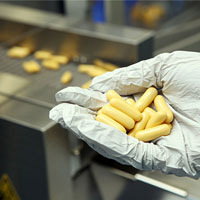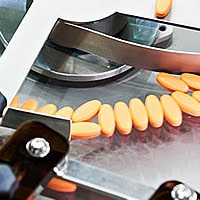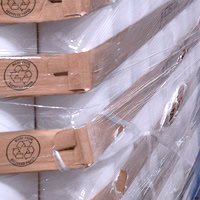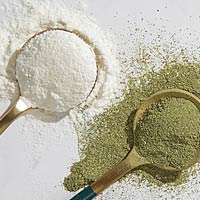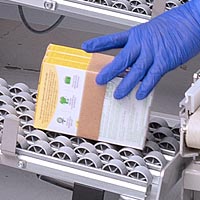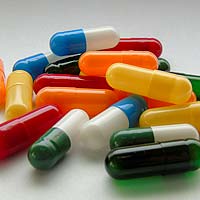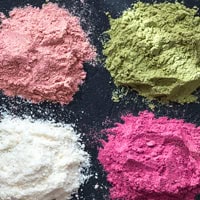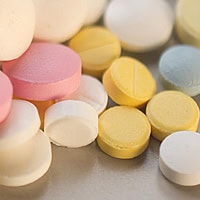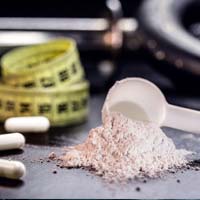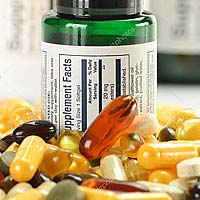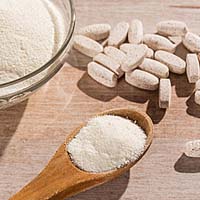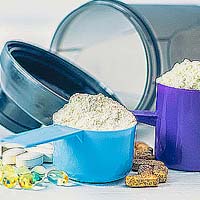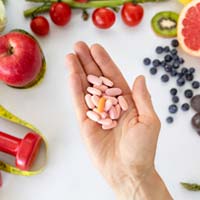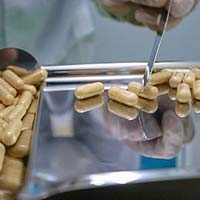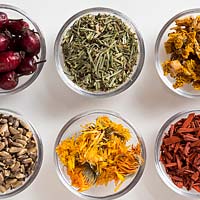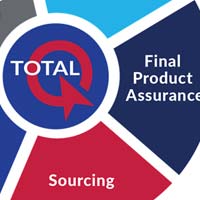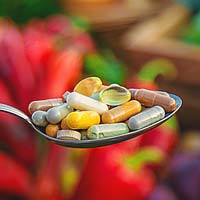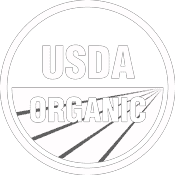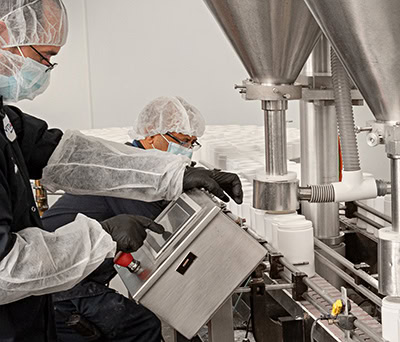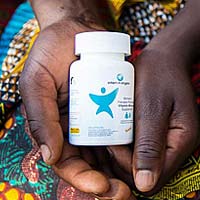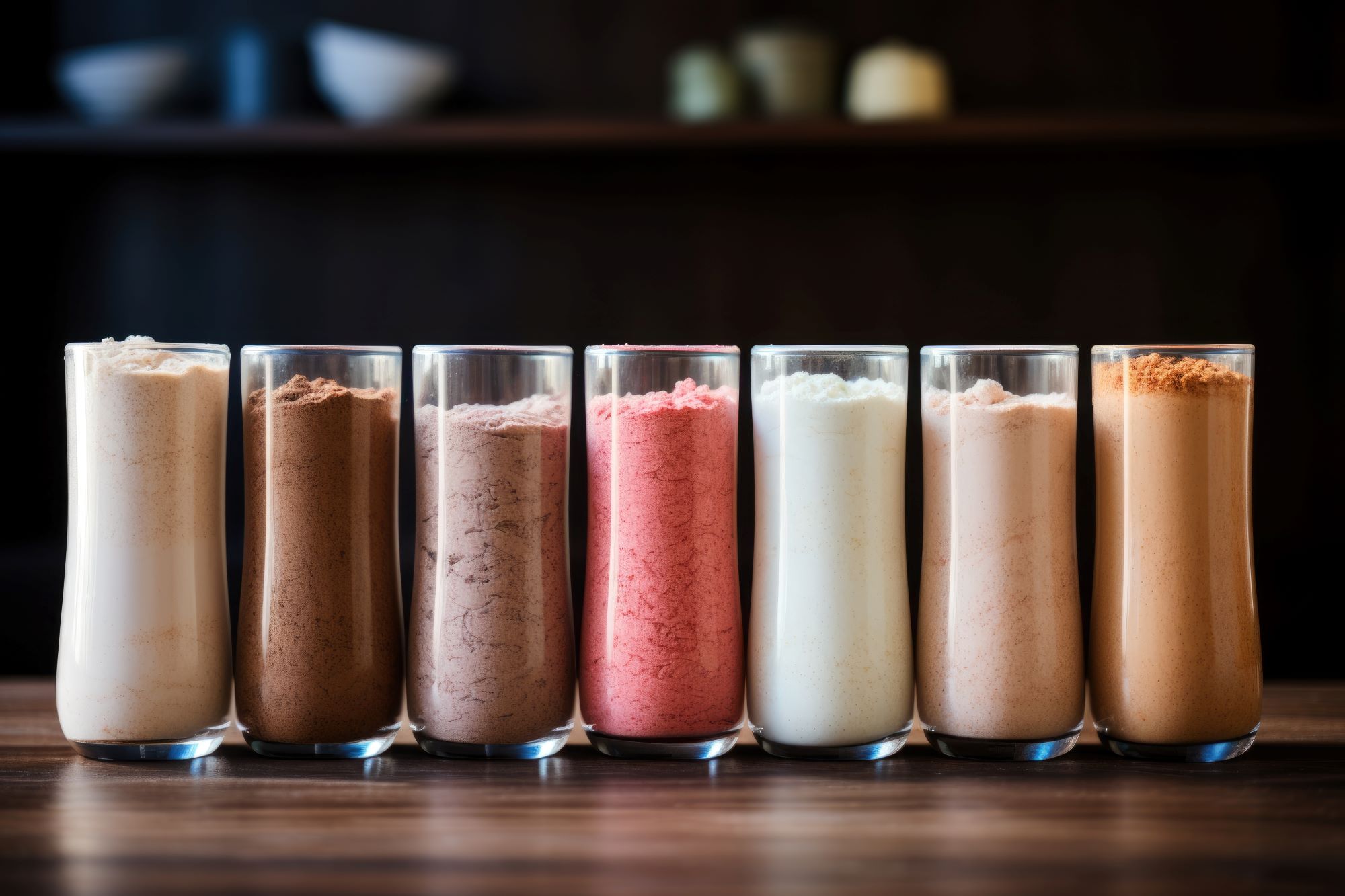If you’ve been paying attention over the past couple of years, you haven’t asked the question, “Is protein powder expensive?” but rather, “Why are protein powders so expensive?”
The reasons are linked to notable increases in specific expenses related to protein, such as inflation, supply chain disruptions, the effects of climate change, agricultural expenses, costs associated with packaging materials, and challenges in securing loans. This is particularly true of dairy proteins, such as whey and casein, which leads to a price increase for these proteins.
Let’s dive into these factors and how they impact the supplement manufacturing cost for brand owners.
Top 8 Factors Affecting the Cost of Manufacturing Protein Powders
As you might expect, several factors are affecting the protein powder price increase. The eight primary contributors—each of which will be covered in the following sections—include: growing demand for protein supplements, rising raw material costs, global supply chain disruptions, inflationary pressures, increased agricultural expenses, climate change impacts, higher production and processing costs, and escalating packaging costs.
Increased Demand for Protein Supplements
The global protein supplement market has grown substantially in recent years. Valued at $28.14 billion in 2024, it is expected to reach $30.40 billion in 2025 and $55.32 billion by 2032, reflecting a projected compounded annual growth rate (CAGR) of 8.93%. This growth can be attributed to several key factors.
During the early stages of the COVID-19 pandemic, demand surged as consumers turned to protein supplements to support immune health and overall wellness while spending more time at home. Additionally, the rising popularity of veganism has fueled interest in plant-based protein options. Increased demand for sports nutrition products and growing consumer awareness of health and nutrition have further accelerated market expansion.1Protein Supplements Market Size, Share & Industry Analysis, By Source (Plant-Based, Animal-Based, and Others), By Product (Protein Powder, RTD, Protein Bars, and Others), Distribution Channel (Supermarkets and Hypermarkets, Pharmacies/Drug Stores, Online Retail, and Others), and Regional Forecast, 2025-2032. Retrieved June 6, 2025 from https://www.fortunebusinessinsights.com/protein-supplements-market-106511.
It’s important to note that rising demand for protein supplements, particularly whey protein, often results in higher costs. In short, increased demand leads to protein powder inflation. As global interest in whey protein continues to grow, supply, especially of specific isolates, has struggled to keep pace. This imbalance between demand and availability is a key driver of price increases.2Gupta A. Why Is Whey Protein So Expensive in 2024? Top Reasons and Affordable Alternatives. Vigorfuel. Retrieved June 6, 2025 from https://vigourfuel.com/blogs/news/why-is-whey-protein-so-expensive-in-2024-top-reasons-and-affordable-alternatives#:~:text=Rising%20Demand%20for%20Protein%20Supplements,directly%20affect%20whey%20protein%20production.
Raw Material Costs
Whey protein is derived from whey and tends to provide a higher concentration of essential amino acids than other protein sources.3Cribb PJ, Williams AD, Carey MF, Hayes A. The effect of whey isolate and resistance training on strength, body composition, and plasma glutamine. Int J Sport Nutr Exerc Metab 2006;16:494-509. Clinical research4Cribb PJ, Williams AD, Carey MF, Hayes A. The effect of whey isolate and resistance training on strength, body composition, and plasma glutamine. Int J Sport Nutr Exerc Metab 2006;16:494-509.5Cribb PJ, Williams AD, Stathis CG, et al. Effects of whey isolate, creatine, and resistance training on muscle hypertrophy. Med Sci Sports Exerc 2007;39:298-307.6 Candow DG, Burke NC, Smith-Palmer T, Burke DG. Effect of whey and soy protein supplementation combined with resistance training in young adults. Int J Sport Nutr Exerc Metab 2006;16:233-44. demonstrates that whey protein isolate (WPI), when combined with strength training, can significantly increase lean body mass, strength, and muscle hypertrophy.7Frestedt JL, Zenk JL, Kuskowski MA, Ward LS, Bastian ED. A whey-protein supplement increases fat loss and spares lean muscle in obese subjects: a randomized human clinical study. Nutr Metab (Lond). 2008 Mar 27;5:8. doi: 10.1186/1743-7075-5-8. PMID: 18371214; PMCID: PMC2289832.8Batsis JA, Petersen CL, Cook SB, Al-Nimr RI, Driesse T, Pidgeon D, Fielding R. Impact of whey protein supplementation in a weight-loss intervention in rural dwelling adults: A feasibility study. Clin Nutr ESPEN. 2021 Oct;45:426-432. doi: 10.1016/j.clnesp.2021.07.006. Epub 2021 Jul 24. PMID: 34620350; PMCID: PMC8502229. Additional studies have shown that WPI supports body fat reduction and enhances levels of glutathione, a vital antioxidant involved in cellular protection and immune function.9Zavorsky GS, Kubow S, Grey V, Riverin V, Lands LC. An open-label dose-response study of lymphocyte glutathione levels in healthy men and women receiving pressurized whey protein isolate supplements. Int J Food Sci Nutr 2007;58(6):429-36.
While attempting to answer the question, “Why is protein powder so expensive,” it’s worth noting that plant-based proteins tend to be less costly than dairy-based options. These proteins are derived from nutrient-dense plants and are available as concentrates or isolates. Popular examples include pea, hemp, and soy proteins.
Pea protein is highly digestible and has been shown to support thermogenesis10Claessens M, Calame W, Siemensma AD, Saris WH, van Baak MA. The thermogenic and metabolic effects of protein hydrolysate with or without a carbohydrate load in healthy male subjects. Metabolism. 2007 Aug;56(8):1051-9., promote satiety11Smith CE, Mollard RC, Luhovyy BL, Anderson GH. The effect of yellow pea protein and fibre on short-term food intake, subjective appetite and glycaemic response in healthy young men. Br J Nutr. 2012 Aug;108 Suppl 1:S74-80., help maintain healthy blood pressure levels already within normal ranges12Li H, Prairie N, Udenigwe CC, Adebiyi AP, Tappia PS, Aukema HM, Jones PJ, Aluko RE. Blood pressure lowering effect of a pea protein hydrolysate in hypertensive rats and humans. J Agric Food Chem. 2011 Sep 28;59(18):9854-60., and encourage muscle growth13Babault N, Païzis C, Deley G. et al. Pea proteins oral supplementation promotes muscle thickness gains during resistance training: a double-blind, randomized, Placebo-controlled clinical trial vs. Whey protein. J Int Soc Sports Nutr. 2015; 12:3. https://doi.org/10.1186/s12970-014-0064-5.. Hemp protein, derived from the cannabis plant but free of THC, offers antioxidant protection and also supports healthy blood pressure levels.14Samsamikor M, Mackay DS, Mollard RC, Alashi AM, Aluko RE. Hemp seed protein and its hydrolysate compared with casein protein consumption in adults with hypertension: a double-blind crossover study. Am J Clin Nutr. 2024;120(1):56-65. doi:10.1016/j.ajcnut.2024.05.001.15Zhang J, Griffin J, Li Y, Wang D, Wang W. Antioxidant Properties of Hemp Proteins: From Functional Food to Phytotherapy and Beyond. Molecules. 2022 Nov 16;27(22):7924. doi: 10.3390/molecules27227924. PMID: 36432024; PMCID: PMC9693028.
Soy protein, the original plant-based protein widely used in the dietary supplement industry, contains beneficial isoflavones. These compounds support thermogenesis16Claessens M, Calame W, Siemensma AD, Saris WH, van Baak MA. The thermogenic and metabolic effects of protein hydrolysate with or without a carbohydrate load in healthy male subjects. Metabolism. 2007 Aug;56(8):1051-9., improve bone mineral density in postmenopausal women17Scheiber MD, Rebar RW. Isoflavones and postmenopausal bone health: a viable alternative to estrogen therapy? Menopause 1999; 6(3):233-41., promote healthy cholesterol levels within a normal range18Baum J, Teng H, Erdman JW Jr, Weigel RM, Klein BP, Persky VW, Freels S, Surya P, Bakhit RM, Ramos E, Shay NF, Potter SM. Long-term intake of soy protein improves blood lipid profiles and increases mononuclear cell low-density-lipoprotein receptor messenger RNA in hypercholesterolemic, postmenopausal women. Am J Clin Nutr 1998; 68:545-551., and help alleviate vasomotor symptoms of menopause, such as hot flashes and night sweats.19The American College of Obstetricians and Gynecologists. ACOG Practice bulletin: Use of botanicals for management of menopausal symptoms. 2001 June 20. Accessed March 29, 2006 from http://www.guideline.gov/summary/summary.aspx?ss=15&doc_id=3977&nbr=3116.20Knight DC, Eden JA. A review of the clinical effects of phytoestrogens. Obstet Gynecol 1996; 87:897B904.21Albertazzi P, Pansini F, Bonaccorsi G, Zanotti L, Forini E, De Aloysio D. The effect of dietary soy supplementation on hot flushes. Obstet Gynecol 1998; 91:6B11.22Murkies AL, Lombard C, Strauss BJG, Wilcox G, Burger HG, Morton MS. Dietary flour supplementation decreases post-menopausal hot flushes: Effect of soy and wheat. Maturitas 1995; 21:189B95.
Global Supply Chain Issues
Global supply chain disruptions have persisted for several years. As early as September 2020, Nutritional Outlook reported that one expert shared the opinion that volatility could last another 12 months.23Grebow J. COVID- your forecasting, and your credit? Sept. 30, 2020. Nutritional Outlook. Retrieved January 31, 2022 from https://www.nutritionaloutlook.com/view/covid-19-s-impact-on-the-dietary-supplement-supply-chain-how-good-are-your-supplier-relationships-your-forecasting-and-your-credit- By May 2021, NutraIngredients-USA echoed this sentiment, suggesting delays would continue for at least another year.24Shultz H. Pandemic supply chain issues likely to persist for many months, experts say. Nutraingredients-USA.com May 21, 2021. Retrieved January 31, 2022 from https://www.nutraingredients-usa.com/Article/2021/05/21/Pandemic-supply-chain-issues-likely-to-persist-for-many-months-experts-say#. In 2022, a survey of dietary supplement brand owners found that 9 out of 10 were still experiencing significant supply chain challenges.
As of June 2025, the landscape remains complex, impacted by geopolitical instability, economic uncertainty, and evolving technologies, such as AI.25Tovee E. The Biggest Global Supply Chain Risks of 2025. Xeneta. March 28, 2025. Retrieved June 6, 2025 from https://www.xeneta.com/blog/the-biggest-global-supply-chain-risks-of-2025. Recent tariffs introduced by President Trump, enacted under measures such as the International Emergency Powers Act, Section 232, and Reciprocal Tariffs, have further strained global trade. These actions have disrupted sourcing from key partners like Canada, Mexico, and China, driving up costs and forcing companies to re-evaluate their logistics strategies.26Britton N. Global trade in 2025: Readying your company’s supply chain in a time of tariff wars. Thomson Reuters. March 12, 2025. Retrieved June 6, 2025 from https://www.thomsonreuters.com/en-us/posts/corporates/global-trade-2025-tariff-wars/#:~:text=Fast%20forward%20to%20Trump’s%20inauguration,their%20number%20one%20strategic%20priority.
So, why is protein so expensive? Because supply chain disruptions also exist for proteins. This is particularly true for animal-based proteins, which are caused by various factors, including global events, extreme weather, transportation issues, and labor shortages. These disruptions can lead to price fluctuations, shortages, and ultimately, impact the availability and cost of protein sources for consumers.27Swanson Z, Welsh C, Majkut J. Mitigating Risk and Capturing Opportunity: The Future of Alternative Proteins. Center for Strategic & International Studies. May 11, 2023. Retrieved June 6, 2025 from https://www.csis.org/analysis/mitigating-risk-and-capturing-opportunity-future-alternative-proteins#:~:text=In%202022%2C%20the%20Meat%20Price,outbreaks%20in%20major%20poultry%2Dproducing.
Rising Inflation
In 2022, and to a lesser extent in 2023, global economic output declined due to downturns in China and Russia and weaker-than-expected consumer spending in the United States. These challenges were compounded by widespread inflation, which tightened financial conditions across global markets. Additionally, COVID-19 disruptions and the war in Ukraine further slowed economic activity in their respective regions. Collectively, these factors fueled what has come to be known as protein powder inflation, as rising costs throughout the supply chain translated into higher prices for both manufacturers and consumers.
Farm-Related Costs
Rising farm-related costs have significantly impacted protein powder pricing, particularly for dairy-based proteins like whey. For example, the cost of feeding dairy cows has increased from approximately $5.50 to $7.09, according to Penn State Extension. Additional data shows feed prices have risen 16% year-over-year, driven in part by high fertilizer costs and drought conditions that have reduced the availability of feed grain and hay.
Labor shortages in agriculture have further strained the supply chain. Finding qualified workers to process dairy products and transport them to market has become increasingly difficult. Although the H-2A visa program offers a potential solution by allowing farms to hire temporary or seasonal immigrant labor, dairy operations are currently excluded from this program, further limiting access to essential workforce resources.
Climate Change
Climate change has contributed to a decline in global milk production, directly affecting the availability and cost of dairy-based proteins. Elevated temperatures and high humidity levels, especially during the summer months, place physiological stress on dairy cows, reducing their milk output. This trend has been particularly impactful in regions with hotter climates.
In the United States, reduced milk production has affected multiple industries that rely on dairy. However, not all sectors have been impacted equally. The food industry often receives preferential access to available milk supplies, leaving the dietary supplement industry to compete for limited resources, further driving up costs for ingredients like whey protein.
Production and Processing Costs
Naturally, the supplement manufacturing process has been affected by the rising cost of protein powders, including the equipment needed to process the protein and the human resources required to complete the job. While this is a static cost and doesn’t contribute to the recent cost increase in protein powders as finished goods, a related consideration is borrowing money.
Borrowing has become more expensive for manufacturers, making it harder to expand operations to meet demand, largely due to tightened lending standards implemented during the prolonged pandemic.28See the April and July 2020 Senior Loan Officer Opinion Survey (SLOOS) conducted by the Federal Reserve. https://www.federalreserve.gov/data/sloos.htm.
In further assessing why are protein supplements so expensive, it’s important to recognize that the form of protein significantly impacts cost. Protein isolates tend to be more expensive than concentrates because they undergo additional processing to remove carbohydrates, lactose, and fat. Hydrolysates, which are further broken down into smaller peptides for enhanced absorption, are typically the most costly due to their intensive processing requirements.29Tinsley G. Whey Protein Isolate vs Concentrate: What’s The Difference? Healthline. September 7, 2018. Retrieved June 6, 2025 from https://www.healthline.com/nutrition/whey-protein-isolate-vs-concentrate.
According to the Dietary Supplement Health and Education Act, contract manufacturers of dietary supplements are required to comply with current Good Manufacturing Practices (cGMPs). To ensure compliance, reputable manufacturers like Vitaquest have earned NSF GMP certification, which requires annual GMP audits. Likewise, Vitaquest holds the globally recognized FSSC 22000 certification for food safety, which is relatively rare in the supplement industry.
The testing procedures and quality control measures implemented in the powder manufacturing process include physical measurements of bulk density, particle size, and moisture content, and chemical testing for potency and impurities using various techniques, including HPLC, ICP-MS, and Protein analysis. Various tests are conducted after manufacturing, including identity, potency, micro, and heavy metal tests.
Naturally, costs are associated with maintaining certifications and conducting testing. Like the manufacturing process itself, however, these are static costs and don’t contribute to the recent cost increase in protein powders as finished goods.
Supplement Packaging
Pandemic- and economy-related disruptions significantly impacted the dietary supplement industry, making it more difficult to source tubs, lids, and other supplement packaging materials. Although the situation has gradually improved, lingering supply chain challenges continue to affect manufacturing timelines and costs as the industry recovers from past shortages.
Additionally, it’s important to consider that premium or specialty packaging for protein powders, particularly options with sustainable features, can enhance shelf appeal and influence consumer purchasing decisions. However, these alternatives often come with higher costs. For instance, sustainable packaging made from recycled materials is typically more expensive than standard options, though consumer demand for environmentally friendly solutions continues to rise. Some brand owners also explore custom bottle shapes or nontraditional containers. In such cases, it’s essential to confirm that these designs are compatible with automated packaging lines. If not, hand-filling may be required, which significantly increases production costs.
How Can Supplement Companies Manage the Rising Cost of Manufacturing Protein Supplements?
The rising costs of manufacturing protein supplements can make it difficult for brands to remain competitive. However, there are several effective strategies to manage these challenges. Choosing a reputable contract manufacturer can improve efficiency and reduce overhead. Incorporating sustainable practices may yield long-term savings and appeal to eco-conscious consumers. Additionally, expanding your product portfolio can help diversify revenue streams and mitigate the impact of fluctuating production costs.
Invest in a Good Contract Manufacturing Partner
Finding the right supplement manufacturer is one of the most effective ways to manage rising protein supplement manufacturing costs. An experienced contract manufacturing and development organization (CDMO) can anticipate and prevent costly issues and resolve them quickly when they arise. With over 45 years of experience, Vitaquest has a proven track record of helping both emerging and established brands bring best-in-class products to market. Our certifications, including NSF GMP, NSF Certified for Sport, Kosher, Halal, and FSSC 22000, underscore our commitment to quality and regulatory compliance. By adhering to rigorous manufacturing standards and providing comprehensive documentation, Vitaquest helps brand owners avoid delays, navigate complex regulations, and minimize costly setbacks.
Adopt Sustainable Practices
Integrating sustainable practices, such as energy efficiency and waste reduction, not only supports environmental responsibility but can also lead to long-term cost savings and enhanced brand appeal among eco-conscious consumers. At Vitaquest, sustainability starts with sourcing ingredients from suppliers committed to environmental stewardship, sustainable harvesting, and fair trade. Our operations focus on minimizing material and energy waste. Most of our corrugated packaging is made from 100% recycled content, and we recycle production waste wherever possible. We’ve also implemented energy-efficient lighting with motion sensors throughout our facilities, saving hundreds of thousands of kilowatt-hours. By encouraging a culture of daily eco-consciousness among staff, we continue to pursue meaningful sustainability goals while supporting the health of our planet and customers alike.
Expand Your Product Portfolio
Diversifying your product portfolio is a smart strategy for minimizing the financial impact of raw material cost fluctuations. When dairy-based proteins like whey isolate become more expensive, brand owners can offer cost-effective alternatives, such as protein blends combining whey isolate with more affordable whey concentrate. Expanding into plant-based proteins like pea, rice, soy, and hemp can further reduce sensitivity to dairy pricing while appealing to sustainability-conscious consumers. Additionally, incorporating complementary products such as essential amino acid (EAA) blends, HMB, and creatine allows brands to meet a wider range of consumer needs related to muscle growth and maintenance. This strategic variety helps insulate the business from pricing volatility in any single category and captures greater market share through differentiated offerings.
Conclusion
Rising production costs continue to prompt many brand owners to ask, “Why are protein powders so expensive?” The answer lies in a combination of global demand, supply chain disruptions, inflation, rising farm and processing costs, climate challenges, and evolving packaging expectations. Despite these hurdles, supplement brands can stay competitive by partnering with an experienced CDMO, implementing sustainable practices, and expanding their product portfolios to include cost-effective alternatives like plant-based proteins and complementary muscle support products. These proactive strategies help reduce risk, control costs, and ensure long-term success in an increasingly dynamic marketplace.
For more information on how we can help you “Deliver What’s Next” in protein supplement manufacturing, call 800-526-9095 to speak to one of our representatives or request a competitive nutraceutical manufacturing price quote!
Frequently Asked Questions about Protein Powders
What are the main differences in cost between plant-based and animal-based protein powders?
Animal-based protein powders, such as whey and casein, are generally more expensive due to the high costs associated with dairy farming. These include feed, veterinary care, labor, and reduced milk output during hotter months caused by climate stress on cows. In contrast, plant-based proteins like pea and rice require fewer resources—they’re cultivated like standard crops, making them less costly to produce. As a result, plant-based proteins tend to be more affordable and are less affected by seasonal and environmental factors.
Are there any emerging trends in protein powder manufacturing that could reduce costs?
Yes, one key trend is the growing popularity of plant-based protein powders. Compared to dairy-based proteins like whey, plant-based options such as pea and rice proteins are less expensive to produce. Shifting focus toward these proteins—or at least including them in your product portfolio—can help reduce manufacturing costs while also appealing to a broader, more health- and sustainability-conscious consumer base.
What are the most cost-effective raw materials for protein powder manufacturing?
Plant-based proteins are generally the most cost-effective. Crops like peas and rice primarily require land, water, and basic agricultural inputs, making them more affordable to cultivate. In contrast, dairy proteins involve significantly higher costs due to the need for animal care, feed, housing, veterinary services, and labor—factors that drive up production expenses.
How does the use of natural ingredients impact the cost of protein?
All protein ingredients originate from natural sources, whether dairy- or plant-based, though dairy proteins tend to be more expensive. Additionally, many protein powders include flavors and sweeteners. While artificial options are more cost-effective, natural flavors and sweeteners are often preferred by consumers, contributing to higher overall production costs.
What are the key factors driving the demand for protein powders?
Several factors are fueling the growing demand for protein powders. The rise of veganism has increased interest in plant-based protein options. Additionally, more consumers are pursuing active lifestyles and seeking sports nutrition products to support performance and recovery. Increased awareness of the role protein plays in weight management and overall health has also contributed to this demand. As consumers become more health-conscious, protein powders are viewed as a convenient and effective way to support their wellness goals.

